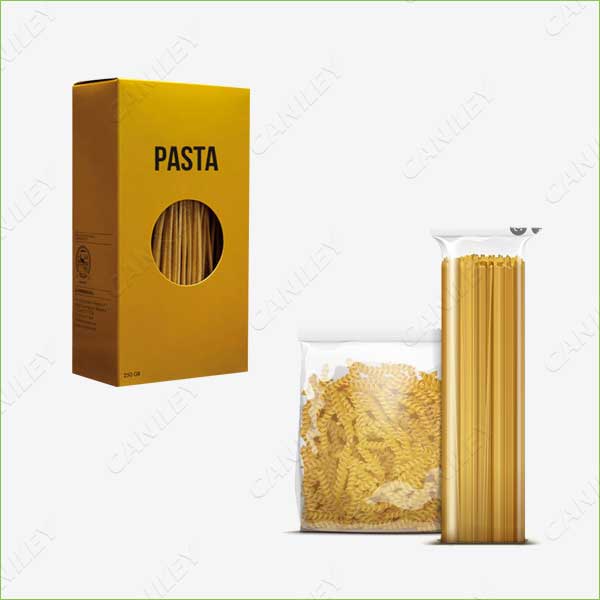Pasta packaging is one of the most important things that has a big impact on a product like pasta and its shelf life. These products can be stored for a long time if they are properly dried and packaged and placed in cold storage and dry warehouses. The taste remains the same and the quality remains the same.

There are many kinds of packaging materials for pasta, including carton and plastic film. The most common pasta packaging material is plastic, which provides the required protection and maintenance, fat resistance, physical strength, processability and printability. Polyethylene, polypropylene, multi-layer patch and PVC are different materials used to wrap pasta.
The material chosen for packaging pasta must have the following properties: It must be able to withstand the processing process. Should not react with the product (neutral). They must protect the product from environmental conditions. They must be non-toxic. They should not transfer odor or taste to the product. Must be approved by the Food and Drug Administration.
Proper pasta packaging should have the following characteristics:
- Protect the product from leaks and damage. Protection from atmospheric factors such as light, heat, moisture and oxygen. The chosen packaging material must have high barrier properties to prevent loss of flavour and entry of unpleasant external odours. Packaging materials must be resistant to grease and oil and compatible with the product.
- In addition to the above functional specifications, the packaging material must be well processed and printable and heat sealable. Can be used on different types of pasta packaging machines.
